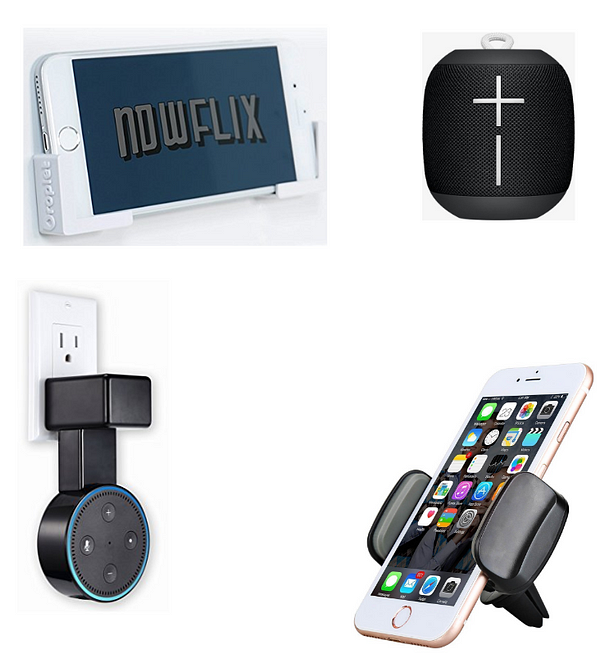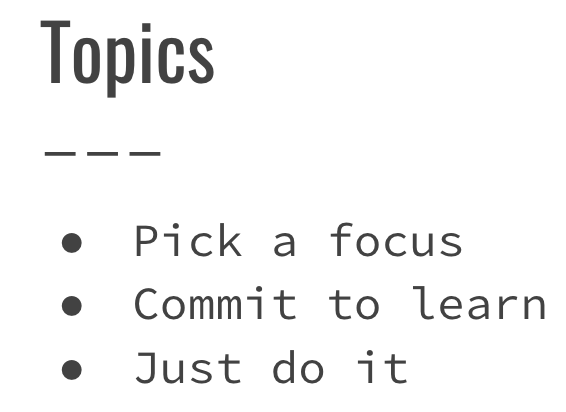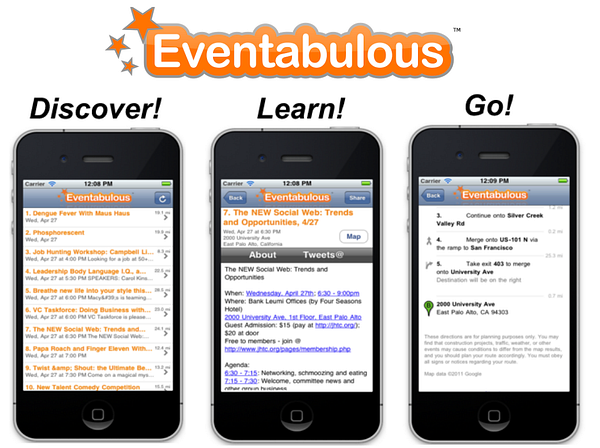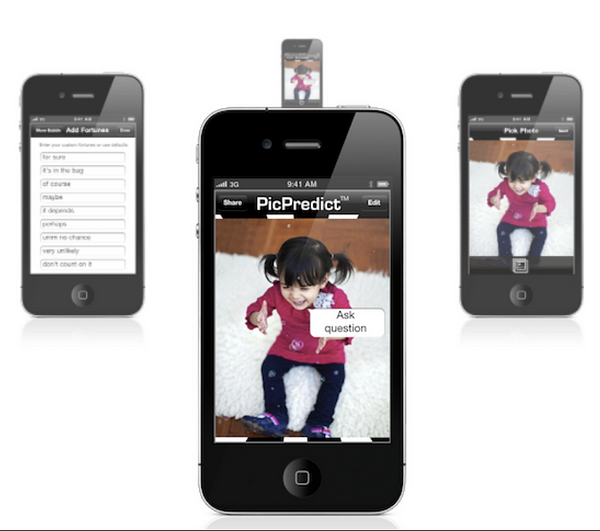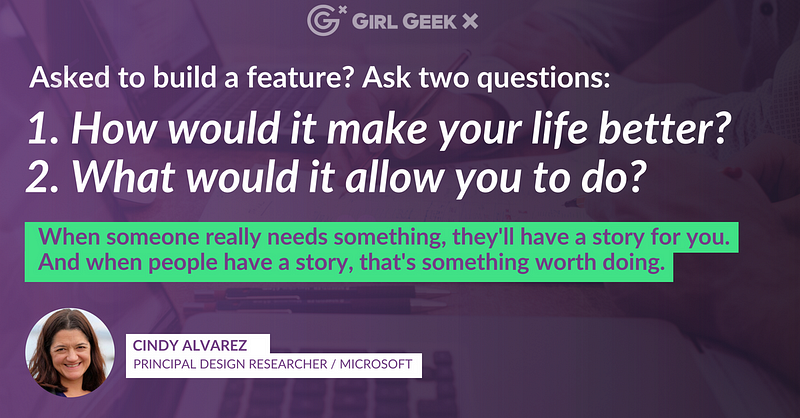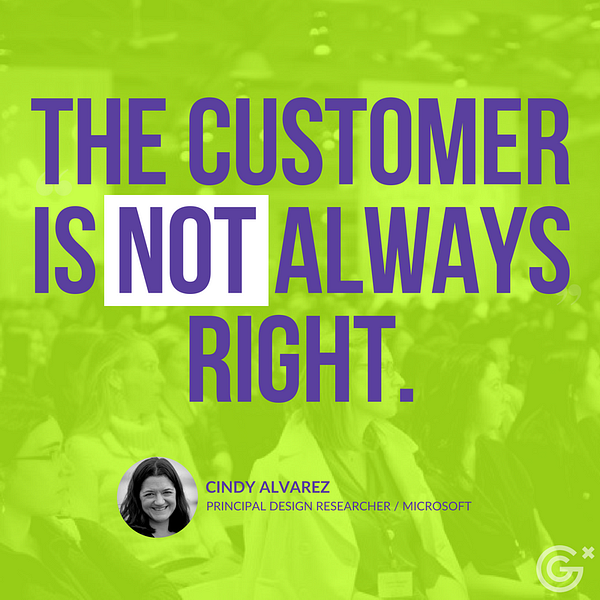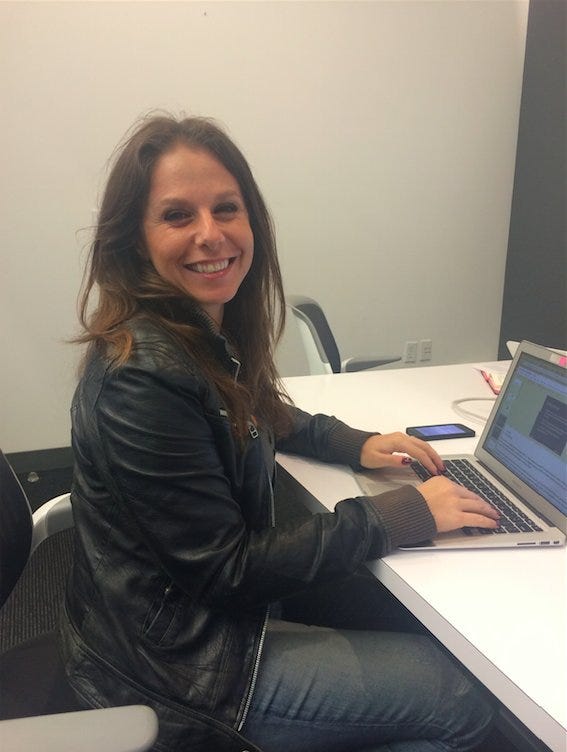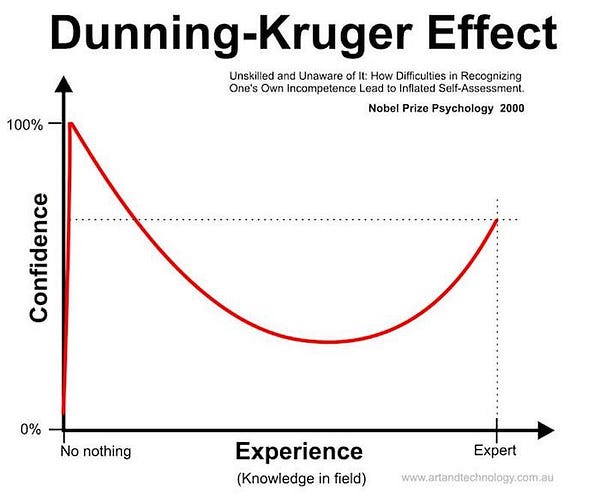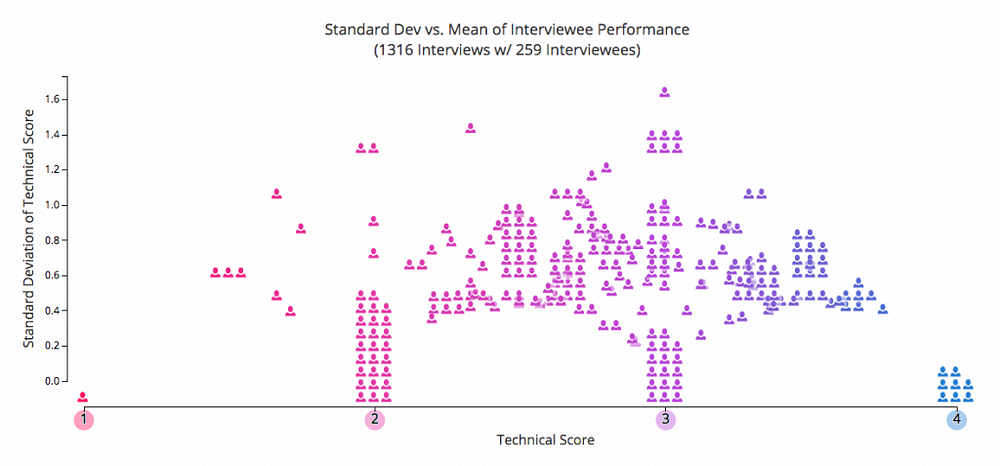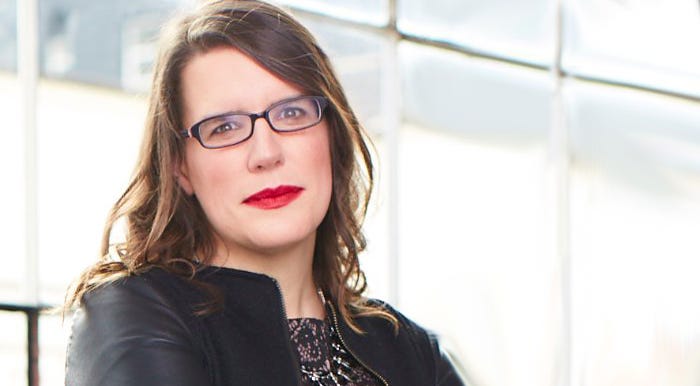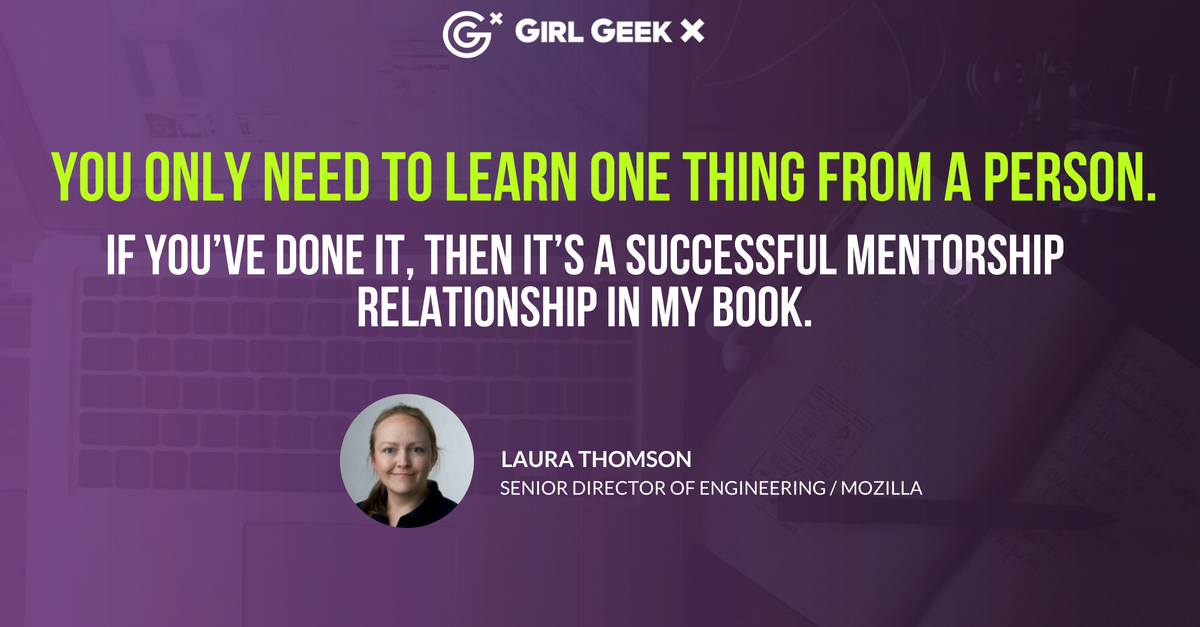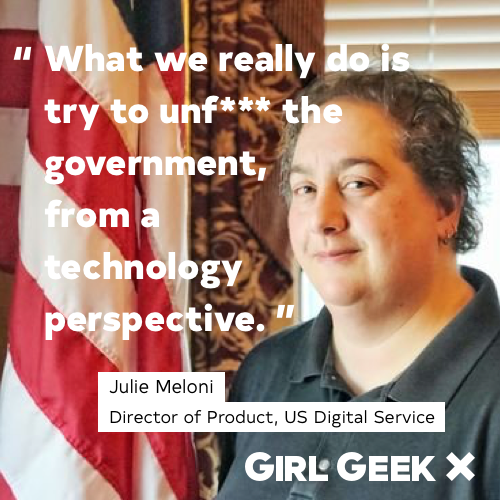Like what you see here? Our mission-aligned Girl Geek X partners are hiring!
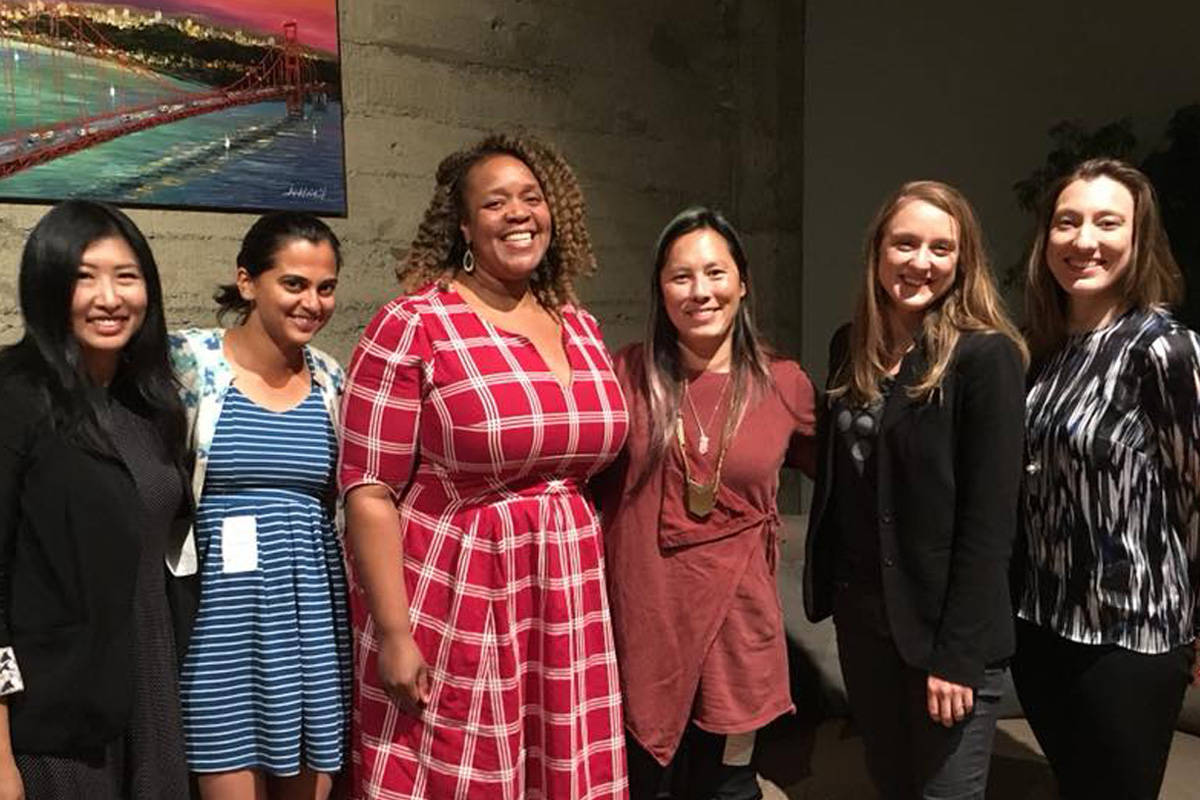
Girl Geek X founders Angie Chang and Sukrutha Bhadouria with the engineering leadership panel – featuring Slack Director of Engineering Arquay Harris, Indiegogo Software Architect Jen-Mei Wu, One Medical Kimber Lockhart Kimber Lockhart and Lever Engineering Manager Rachael Stedman at a Girl Geek Dinner!
Panelists:
Arquay Harris / Director of Engineering / Slack
Jen-Mei Wu / Software Architect / Indiegogo
Kimber Lockhart / CTO / One Medical
Rachael Stedman / Engineering Manager / Lever
Angie Chang / CEO & Co-founder / Girl Geek X
Sukrutha Bhadouria / CTO & Co-founder / Girl Geek X
Transcript of Engineering Leadership Girl Geek Dinner – Panel:
Angie Chang (Girl Geek X): Hi! My name is Angie Chang, and I am the founder of Bay Area Girl Geek Dinners. Thank you for coming out! It’s our 147th Girl Geek Dinner tonight. I wanted to bring together strong engineering leaders to talk about their careers and journeys.
Sukrutha Bhadouria (Girl Geek X): Hi! I’m Sukrutha. By day I work at Salesforce as an engineering manager, and by night I show up with Angie at Bay Area Girl Geek Dinners. We get a lot of requests when people are on the wait list to see tweets so they can follow the conversation.
Angie Chang (Girl Geek X): I brought this panel together because we see [job] titles all the time like architect, and CTO, and director of engineering, and we don’t know what they mean from company to company, so I wanted to ask Jen-Mei about what an architect at Indiegogo does day-to-day, and broadly, how you got there…
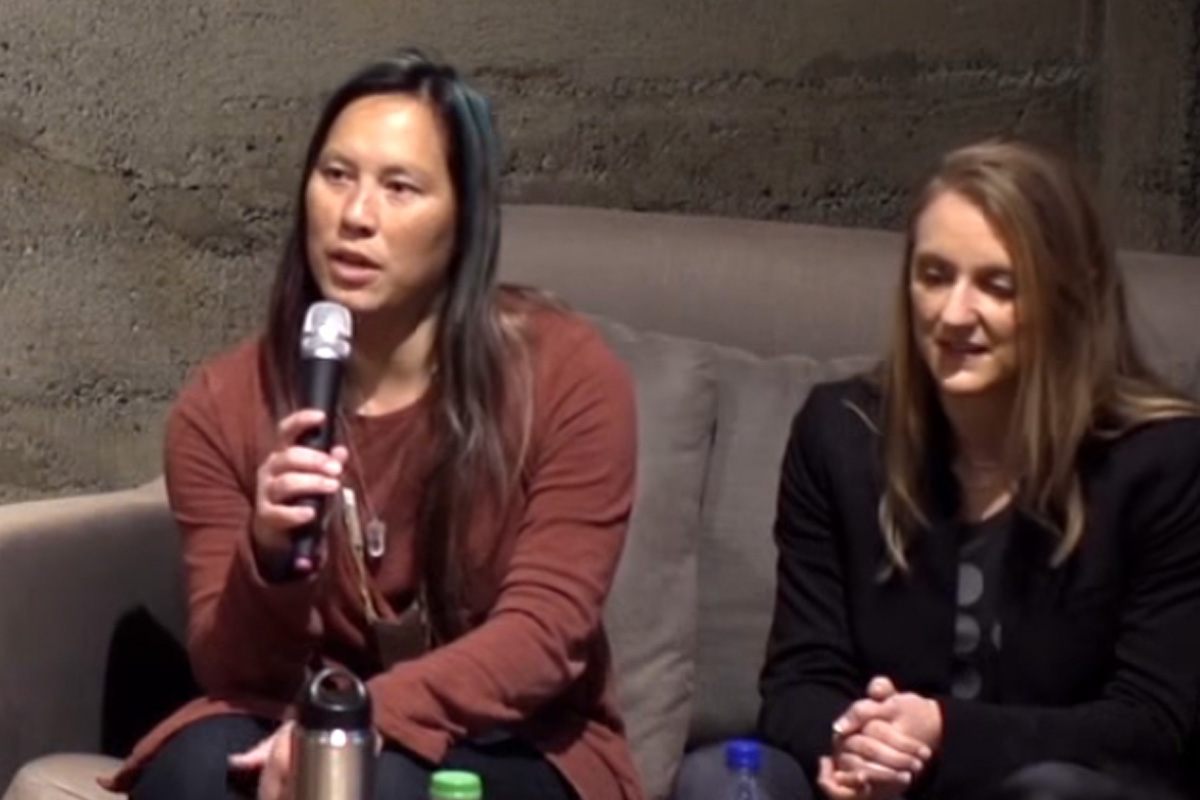
Software Architect Jen-Mei Wu speaking at a Girl Geek Dinner.
Jen-Mei Wu (Indiegogo): My name is Jen-Mei. I’m an architect at Indiegogo. What I do… I’m on the engineering leadership team along with the directors of engineering, and the vice president of engineering, and I don’t manage people but I manage technical direction and technologies that we use.
Jen-Mei Wu (Indiegogo): We have two architects at Indiegogo and I focus both on fronted architect and platform based things like CDMs and the cloud. I’m kind of like a sandwich, and I’m the bread, and the other architect is the filling (he does the backend, which is in Ruby). In the past, I have spent most of my career in management. I was the director of IT and director of engineering for many years, and I started a consulting company which I ran for many years. When I shut down my company and wanted to be a regular worker bee (and not worry about making sales and making sure people get paid), I ended up joining another consultancy that a friend of mine (Sarah Allen) started, and I was director of engineering… and we were acqui-hired by Indiegogo, where I was an engineer, and became a product manager, and now architect. I got here in a non-traditional path.. my major was english and history in college.
Sukrutha Bhadouria (Girl Geek X): We were catching up with each of the panelists backstage. The first time I met Kimber, she was the VP of Engineering, and now she is the CTO [at One Medical]. I’m curious — what is your day like as CTO, and what skill set you acquired along the way that you put to good use now as the CTO?
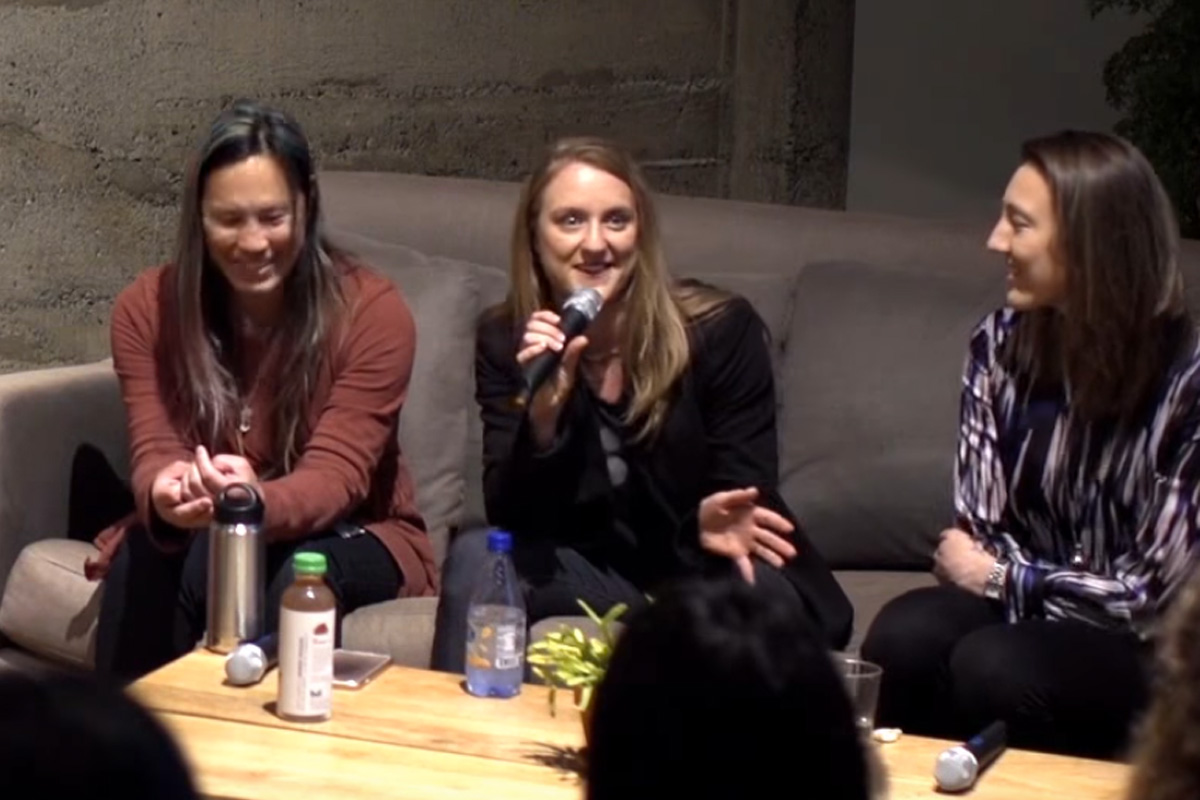
CTO Kimber Lockhart talks about her role at One Medical at a Girl Geek Dinner.
Kimber Lockhart (One Medical): CTO is probably the most varied title in all technical roles, and the reason for that is that it can mean different things. At a startup, the CTO can be the first technical person on board, or it can be the technical founder. The CTO can be the most senior person on the engineering team that manages people. Sometimes the CTO doesn’t manage anyone and is the chief technical architect and decision-maker.
Kimber Lockhart (One Medical): I am none of those kinds of CTOs. In the healthcare space especially, often the CTO is the person in charge of technology — which I guess kind of makes sense? So I am in charge of our product management, design, and engineering teams — as well as some of our technical support, IT and security. And before that, I was actually VP of Engineering at One Medical and had the experience of stepping into the CTO role and taking on a bunch of functions that I had never managed before, figuring out how to do that, and then bringing on a very good VP of Engineering to fill the role that I formerly had.
Kimber Lockhart (One Medical): What skills did I develop along the way… I started my career as an entrepreneur, which was an amazing way to learn leadership the hard way, went thru all of the ups-and-downs of running a small company and ultimately ended up selling that company to Box. I joined Box as the 43rd person (12th engineer) and that company I think was about fifteen-hundred or so by the time I left… absolutely explosive growth, and with that growth came the growth of my management career. I had the opportunity to learn to be a manager, with some really great guidance, and ended my career there as a director before I went to One Medical.
Angie Chang (Girl Geek X): Arquay, can you tell us about what it’s like to be a director of engineering at Slack and how you got to that role?
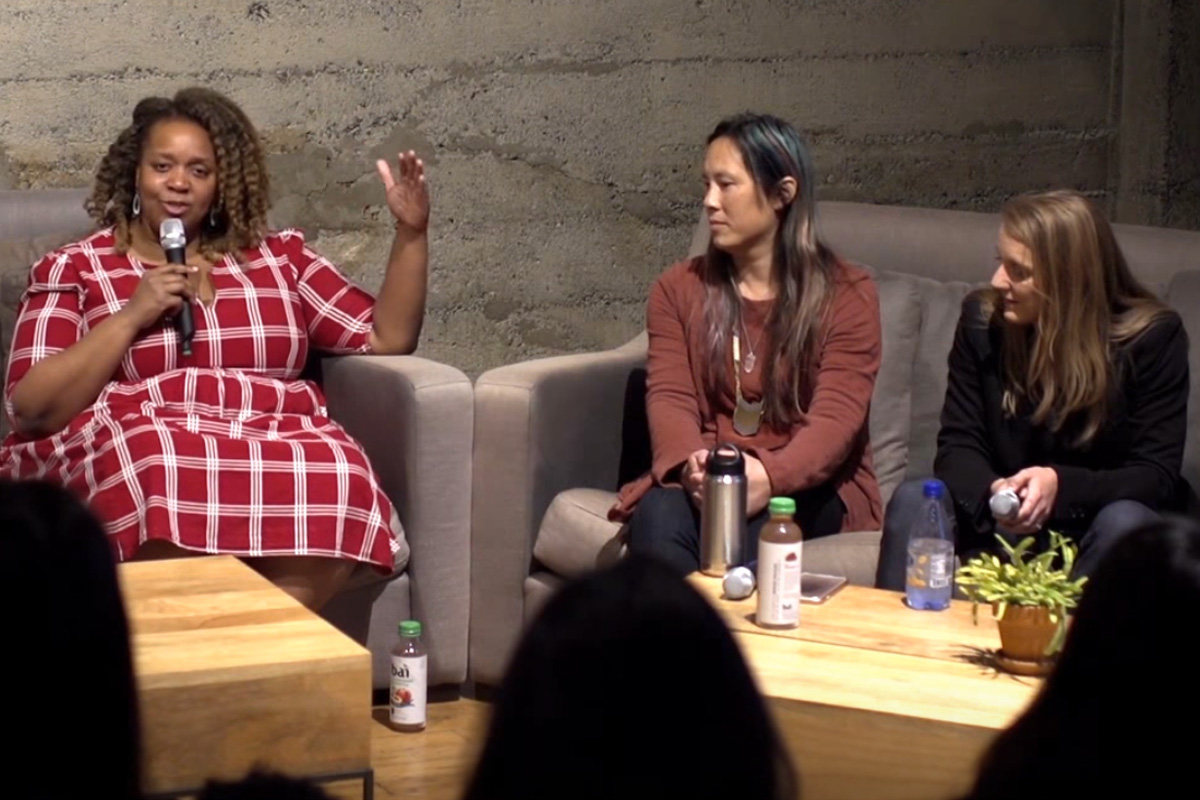
Director of Engineering Arquay Harris speaking at a Girl Geek Dinner.
Arquay Harris (Slack): I am a director of engineering at Slack, I’ve been there about a year and a half. What do we do… Slack is a very early stage startup but we’ve had a lot of hyper growth. When I joined the company, I was a senior engineering manager and I had two reports. I had a very small team, and that was totally fine with me — I wanted to work at the company and believed in what they were doing — and very quickly, I got more and more responsibility and after six or eight months, I got promoted to director of engineering.
Arquay Harris (Slack): A lot of what I do day-to-day is essentially building engineering processes, because I come from a much larger company before Slack (about sixty thousand people who worked there, and so there’s a process for everything) and coming into a new engineering organization, a lot of what you do is paving the roads, making it so that you can make and build teams to be efficient and do their best work possible.
Arquay Harris (Slack): How I came to Slack… I also have a pretty non-traditional background, I actually started college as a mathematics major, I was going to be a math teacher, yay math, but I was introduced to visual arts by an after school job and so I learned to do Photoshop and Illustrator and liked that work, so I ended up transferring schools and changing majors to do media arts and design — that’s everything from making movies and doing sound and my concentration which is digital illustration.
Arquay Harris (Slack): So I got into coding because I didn’t like the process of designing something and handing it off to someone else to code, and I had this very analytical math background, so I just taught myself. And then I ended up continuing that learning when I went to grad school, and there, I did even more coding, fine art painting, 3D.
Arquay Harris (Slack): I am a developer and I also have an MFA. And I think I have to continually have that conversation about “I have an MFA but I also code!” I like this idea of form following function, and I think that’s kind of how I came into tech. After grad school, I worked at CNET, a very old media company, and a company called Google, and then Slack.
Sukrutha Bhadouria (Girl Geek X): Rachael, you are next. We definitely want to hear about your journey. You are now an engineering manager, how did you get to this point, and what your day is like.
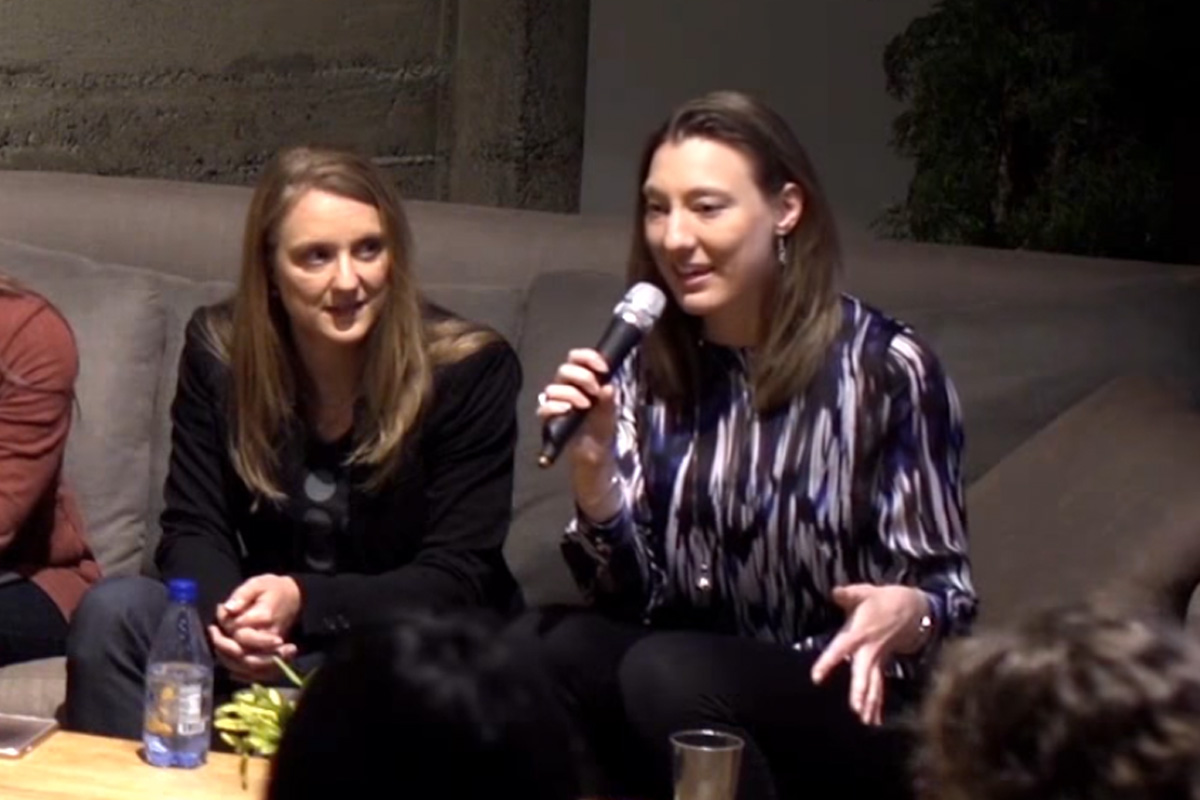
Engineering Manager Rachael Stedman speaking at a Girl Geek Dinner.
Rachael Stedman (Lever): I’ve been at Lever for almost three and a half years now. I actually joined as an engineer. About two years in is when Nate asked me for the first time whether I wanted to be an engineering manager, and my first response was, ‘nope’! Basically what had happened is, being an early engineer at an early-stage startup (I joined when it was about ten people), you start taking on more and more responsibility as the company was growing. I moved from building features to building features that involved refactoring the entire data schema and running migrations and doing it all without the users noticing — so kind of moving down the stack… and so I was working very closely with the infrastructure team and we were looking to hire an infrastructure manager.
Rachael Stedman (Lever): Hiring managers is a difficult thing to do well, especially at a startup because they have a huge influence on the culture, so you need someone who is very aligned with the companies values and who is also interested in doing the engineering management, and we had been searching for a very long time. In the absence of having a manager, I started taking on those responsibilities — so they asked me if I wanted to do it full-time, for real.
Rachael Stedman (Lever): The first time I said no because I was afraid of missing programming — I enjoyed being an engineering — and I enjoyed the management (that’s why I started doing those related responsibilities) and I was really afraid to let go [of programming]. So I went back to being an individual contributor for a while and then he asked me again three months later and e’d came up with two different paths — he said here, if you want to focus on the technical stuff, here is a really cool technical project that you can focus on but you would have to let go of these things that you have taken on, or you can go down the manager path which I really want you to do.
Rachael Stedman (Lever): I really appreciated him laying out those two options for me, because that made it seem like I was choosing, and not pushed, into management. I considered and asked, ‘if I don’t like management, can I go back?’ He said ‘of course’, so I ended up choosing that, and I’ve been a manager now for over a year. I manage our backend and infrastructure teams.
Rachael Stedman (Lever): What that looks like day-to-day… I’m currently reading Radical Candor, and the way Kim Scott defines what a manager is supposed to do is guide teams to achieve results. So the guidance part is a lot of listening and having conversations with people, and listening to what is being said and not being said, and providing input and asking questions to get people to arrive at their own conclusions. The ‘achieve results’ part relies a lot on communication and finding alignment between company goals and how your team contributes and making sure everyone on your team understands how they contribute, and how their personal goals also align with how they are contributing to the company.
Angie Chang (Girl Geek X): That’s a great segue into our next question… What are some books, resources, or thought leaders, or people to follow on Twitter, that have helped you in your career?
Kimber Lockhart (One Medical): If you get me started on leadership books, we’re going to be going all night. My favorite pick is the book Multipliers — it’s about how do you as a leader make your team better than the sum of its parts, and bigger than the sum of its parts, and more effective, a place that people want to be and achieving their goals. For me, I read it early in my management career and I read it again a few months ago, and I learn something new from it every time. Multipliers.
Sukrutha Bhadouria (Girl Geek X): I heard all of you talk about your path and with that I assume that your goals kept changing every time you got to the next step. How do you continually keep a watch out for the gaps that you have to get to that next new goal, and once you get there, whether it changed or stayed constant, how do you keep an eye out for the next gap? And how do you do this? How have you been doing this, and recommend others to do this?
Arquay Harris (Slack): I try to think about it in terms of, what is the highest aspiration I have for myself? A lot of people think about five year plans, and if I look back at my life five years ago, I probably would not think that I would be in the position that I am in — but what I mean by highest aspiration is — is it to be CEO of a company? Is it to be CTO of a company? Is it to just continue to be Director of Engineering? Knowing that helps me figure out how to chart my career — it’s like the north star.
Arquay Harris (Slack): So for example, if I said ‘I want to one day be CEO of a Fortune 500 company’, I would probably make different career decisions. I might try to get bigger and bigger teams, I might move jobs more often, I might have different goals. Up until very recently, my aspiration for myself, I like Director of Engineering. I like the ability to mentor people on a one-to-one kind of level; I like the human interaction. If I am CTO of a company that has ten thousand engineers, it’s probably difficult to do that in the way that I want to do that. I think if you had asked me that today, maybe that answer is different.
Arquay Harris (Slack): Understanding that as my experiences change, that that aspiration maybe changes, and maybe I should think differently, maybe I should network, maybe I should do Girl Geek Dinners to get more exposure, and understanding that north star is pretty important.
Rachael Stedman (Lever): So there are a lot of times where I realize later I had no idea what I was looking for, or what my goals should be.
Rachael Stedman (Lever): Before I joined Lever, I spent four months job-searching, and that’s a long time to think about what you want in your next job, and I put together this huge packet and I was reading a lot of books and I was thinking about what I wanted in my next company. I had come up with this check-list of all these things that I was looking for, so I was really interested in learning and growing — and I assumed that meant I needed to join a team with all these senior engineers with ten years of experience on me, and that’s the way that I am going to learn.
Rachael Stedman (Lever): At the time I was really into data visualization, and wanted to do something in the personal fitness or personal health space, and all these things were — these were my goals and what I was looking for — and when Nate contacted me about Lever, and I was in Boston looking for a job, and he said they were in San Francisco and hiring in software — it did not remotely sound like what I was looking for. But he convinced me to talk to Sarah, and Sarah convinced me to come out to San Francisco to visit Lever for a week, to spend in the office getting to know the company and what they were working on and meeting the people on the team, and I did, and I’m really glad I did.
Rachael Stedman (Lever): Even though Lever checked none of the boxes of my four month huge, documented check-list, I really came away from that experience feeling like it was a company with a product and a team I could really get behind, and I joined and have been there ever since. But I don’t think the exercise of thinking thru what I wanted was invaluable — there was a lot I learned about myself in the process.
Rachael Stedman (Lever): What I took away from the process is, you often don’t know what all the opportunities and options are going to be, so you can think about what you are looking for, and go thru that exercise — but also don’t limit yourself when you find something that maybe doesn’t match what you expected.
Jen-Mei Wu (Indiegogo): That’s a really good point. Sometimes you don’t know what all the options are. One of the things that really helped me in my career. It was kind of a different time — I knew more women engineers leaving the industry than coming in so it was really hard to find other people, so support groups and Systers and other organizations were really helpful.
Jen-Mei Wu (Indiegogo): Talking to people is a good idea for support — I think it’s a little better now to be a woman in engineering — talking to your peers, and also, if there is someone who you admire, someone whose job you think you might want, people are often very willing to have an informal interview with you. If you reach out and you say, hey I really want to find out more about being an architect, or a product manager, or a director of engineering — can I just buy you lunch, or can we get coffee or just chat after work — a lot of people are really open to that, and I think that would be really great for people to take advance of that. I think at an event like this, you are going to see all kinds of people, you can see us, and say hey — can we connect on LinkedIn and maybe have a follow up meeting, these are totally things that are open to you at events like this — it is so very helpful.
Kimber Lockhart (One Medical): I occasionally give a workshop on career paths, and thinking about career paths, and one of my very favorite exercises from the workshop is that we draw three very different pictures of things that could happen — it might be like, dream career moments.
Kimber Lockhart (One Medical): So I draw for example, well maybe I’ll quit my job and join a venture capital firm and go interview a bunch of heads of engineering and write a book, wouldn’t that be fun.
Kimber Lockhart (One Medical): My other one is, I’m going to be the CTO of the US and wouldn’t that be very exciting except maybe not right now… The point of the exercise isn’t so much the crazy visions but the part where you look at each of those visions, and say what you can do about this can enhance my career right now.
Kimber Lockhart (One Medical): About writing that book — I thought I wanted to get my ideas out there, and so about a year ago, I decided to make time to start writing essays and start posting on Medium (something anyone can do) and found that it was a wonderful way to grow my career that I haven’t been before. It wasn’t about aiming for what is next level up in the management chain, but what is another dimension that I can add to my career today.
Angie Chang (Girl Geek X): Thank you for all those thoughts. One thing I hear a lot about in the Silicon Valley and in women’s events is the topic of mentorship and sponsorship. What are your thoughts about getting mentored or finding a mentor, and how you approached that?
Kimber Lockhart (One Medical): When I became a director, it was the first time in my career that were some things that just didn’t quite make sense. So I got some feedback that said I needed to be ‘more strategic’ — has anyone gotten that feedback before? I was like, ‘what does that even mean? Where do I start being ‘more strategic’? So I thought the only way I am going to really find out, was to talk to people who were supposedly strategic, and ask what they are doing to be strategic, and then I can do those things, and I can also be strategic.
Kimber Lockhart (One Medical): This is one of the wonderful parts of being part of the sisterhood of women in technology, is that when I went out to ask people to be introduced to, I got to meet all these badass female, largely, also men, heads of engineering who were ahead of me in their career and could help me figure out that gap to figure out what that ‘strategy’ actually meant.
Kimber Lockhart (One Medical): I’m still in touch with some of them. I’m pretty sure that if I told them that they were my mentor I’m sure they would look at me and say ‘that makes me feel old!’ but we are friends and do meet up and compare challenges. There is nothing like someone who has done it before a couple of times to help you cut thru your thought process and figure out the right next step.
Arquay Harris (Slack): I think that in recent years, I have been able to find mentorship via peers, and there are so many amazing groups like this, and meet ups and that kind of thing, and there are a lot more opportunities for women in tech these days… but to be honest, when I was coming up in my career, I first became a director of engineering at the first tech company I worked at, and there is to be honest a certain amount of privilege to having a mentor because people who are CTOs of VPs of Engineering, and they maybe have two spare hours a week to spend on something that is not work or family and unless you have a connection, they are much more likely to spend time with someone who looks like them, or is the brother of someone they went to Ivy with, and so, quite honestly, those doors were not always open to me.
Arquay Harris (Slack): Now that’s why I try to make that time… There are some people here who work with me at Slack, and I try to always make time for one-on-ones. I go to events. I mentor. I just came back from a big recruiting trip at HBCUs in Atlanta, and I try to make it so that road is a little bit easier for those behind me, but it wasn’t easy, to be honest.
Rachael Stedman (Lever): When people talk about mentorship, the vision that comes to mind is you find a mentor, and you meet with them, and they mentor you over the course of many years. And that sometimes happens, but for me — it has taken many different forms. It may be a one-on-one conversation with a manager who is on a different team cross-functionally and I learn something from that conversation and I take it away. It may be a coffee meeting with an eng manager at another company, and we have one conversation that I really enjoy and take something away from and it’s not necessarily an ongoing thing.
Rachael Stedman (Lever): There are a lot of different shapes and forms of conversations and connections with people that you can learn from and take insights away, and it doesn’t have to be a really long on-going formal relationship.
Jen-Mei Wu (Indiegogo): I’ll echo what everyone said, especially in my own case, it’s much more peers that are helpful than looking up. The other part of that — the question — was about sponsorship. I am not exactly what you mean but I think what you mean is that someone is going to advocate for you and find opportunities for you. A lot of it is expanding your network.
Jen-Mei Wu (Indiegogo): The things they say about getting informational interviews or just going to events like this is really helpful because who you know is really going to help you out — and you don’t know if that person you went out to coffee with is going to help you get that job. I have a friend who did an informational interview at a place, and eventually she ended up becoming the VP of Product there.
Jen-Mei Wu (Indiegogo): A lot of these things lead to other things, but you don’t know. But you can make more opportunities for yourself by meeting more people and taking advantage of networking. And on the other side of that, I feel really fortunate to have the positions that I have had. I feel it’s really important to give back, so I try to think about the things that would have helped me.
Jen-Mei Wu (Indiegogo): Sometimes people are afraid to ask and they are afraid to approach you, so if there are other people at events like this, or at work, and I may offer suggestions in terms of career advice, like for example, the best time to plan for a negotiation is a year before the negotiation — you want to plan ahead and set things up for your negotiation — that’s something we talked about at the women in tech group at Indiegogo recently. Also, I try to look for opportunities — not just the jobs I’m directly involved in hiring for, but also opportunities all around. I may mention to someone who is looking to hire someone, or someone who is thinking about creating a position, that somebody might be really good for that.
Jen-Mei Wu (Indiegogo): Sometimes it’s not about positions but it’s about projects — some projects have a higher profile than other projects do, so it’s good to think about that. Occasionally, I run into a situation where somebody who has very little experience has a job with a lot of responsibilities like a VP position or something like that — and I wonder how did that happen, and it almost always turned out to be they had a connection — that they had a mentor at the company who helped them go to manager, then director and then maybe VP as well. So it’s really important to both help other people out and well as it is to look for those opportunities.
Kimber Lockhart (One Medical): Can I take one more stab at this? I just want to share — there are three things to be an awesome mentee. So if you are out looking for a mentor, there are three things that I highly recommend.
Kimber Lockhart (One Medical): One is — don’t be afraid to reach out, but take on the logistics yourself — do the hard parts (send the available times, and really be on top of setting up the meeting schedules).
Kimber Lockhart (One Medical): The second thing is to listen really closely, and come back with reports of what you tried and how it worked. As a mentor, you would not believe the number of times I’ve had these great conversations with people and I’m so excited to hear about how it goes and nobody ever gets back to me, and I really wonder whether our plan was a good one! I learn a lot too about from the process of people trying things out at their own companies.
Kimber Lockhart (One Medical): The third part, is there are more ways to give back to a mentor than you may immediately think of. I’ve had a mentee offer to feature me in an article she was writing, and she actually got quite a bit of traction on it and it was really cool for me. I’ve had people send people send me leads for good candidates — if you want lots of mentoring, send great candidate leads, this is great (sarcasm)! It’s not a bidirectional exchange — it’s not like I mentor and I expect to get paid in some fashion for that work. I like to help people in their career because it’s the right thing to do and I was there once too, but at the same time — if folks are willing to put in the effort and time to be a great mentee, then it really makes the relationship worth it.
Sukrutha Bhadouria (Girl Geek X): This is all amazing advice. I wanted to say, every Girl Geek Dinner we attend, we are fortunate because our list of role models grows with that. While you talk about mentorship and sponsorship, I am curious, even a peer can be a role model. Are there many or any that have really impacted you?
Arquay Harris (Slack): A specific name of a person?
Rachael Stedman (Lever): I think the benefit of having a peer, or someone who is likely going thru the same type of growth as you, so they are really close to it and you can really help each other. Sometimes it’s just helpful to have someone who is willing to listen and help you talk things out and come to realizations yourself. Early Lever, when we were growing as a company, there were a lot of challenges and ups-and-downs when you are growing a startup, and being able to rely on the people around you to learn and grow from them, there’s a lot you can get out of it — and give, too.
Arquay Harris (Slack): When I was starting up, when I was an IC (individual contributor), there were a lot of technical people who really taught me to do higher-level problem-solving and whom I really wanted to learn from. And as I moved into management, the people who were really influential to me were people who I felt like I basically wanted to emulate. If I went into a meeting with these people, and I felt like wow that was really an important meeting, I really got a lot out of that — how did they do that — how did they structure it and not waste people’s time.
Arquay Harris (Slack): It also helped me because, sometimes in our careers, and I am certainly guilty of this too, you have skill inflation — you think ‘I am the most amazing engineer there ever was’ and you are not — this is just the reality of the situation — I try to look at, if there is someone who is really successful, I try to think am I really as successful at that person, is there something that they are doing that I am not doing. It comes from different directions, and I think for me it really comes down to.. what I try not to do though is to be like…
Arquay Harris (Slack): Do you ever see someone who is in a really amazing dress, and you think ‘that would not look good on me’. You have to also know when to emulate the things that work for you, and to not completely lose sense of yourself because that makes you doubt your own instincts and your own ability to grow. It’s been a hard path but I think now I’m at a pretty solid point where I know who to associate myself with and who to learn from.
Angie Chang (Girl Geek X): There was a mention of ‘hard things’ in the Silicon Valley. Is there a time that you felt that you felt that you might learn tech and the workplace, and what did you do about that?
Arquay Harris (Slack): Oh yeah, I totally left tech. That’s why I had a big-eye reaction. In between my last company and current company, I was semi-retired for three years. I just traveled… I went to Thailand, Portugal, Spain, India. Also, as a tech person, when you get into management, one of the things that is sad about being a manager, you pretty much never code again — I mean there are exceptions, but for the most part, it’s very difficult.
Arquay Harris (Slack): So I just did all the projects! I built a CRUD app in every single technology ever. I took an MIT course on algorithms, Harvard CS 50 course, all the things! And I did that because, yeah you get to point where you are working working and working, you are working so much, you are achieving, and you start to lose sight of the thing that you really love to begin with, and I really wanted to reconnect with that thing. But I also feel that as much as I love Slack, it’s a great company, I sometimes have thoughts like — is this my last tech company? Should I just retire and teach math to seventh graders? These are thought that I have had… It is a thought that I have had.
Jen-Mei Wu (Indiegoogo): Yeah, I’ve had this thought over and over again. As I mentioned, I majored in english and history and I always thought I’d go to grad school in literature or history or something. When I first started in tech, I started in testing — I was a QA (quality assurance) person doing black box testing. I thought I’d pay off some of my debts and then the debts didn’t really decrease as quickly as I was thinking that they would, and other opportunities came up, and I started getting more interesting jobs, and I kinda got sucked back in… and then I ended up working for a company where I started as the manager of IT, and quickly became the director of IT, and then became director of engineering, and during that director of IT time, that’s where most of my PTSD of management came from. We grew the company from about 30 people to more than 300 in less than two years, and while that’s very small compared to what Slack had gone thru, it was really harrowing because to hire 300 people, you hired maybe 600 people because a lot of people didn’t really stick around.
Jen-Mei Wu (Indiegoogo): After that, I was questioning my life choices — ‘do I want to work in tech?’ A lot of my friends were working for non-profits and doing social justice work, and I was noticing that my income is getting higher and it was starting to feel really weird, and so I thought: ‘do I identify more with people that I work with, or people in my community?’ and then I was falling on the side of the community, and then I did actually quit — and I thought I was going to take a little bit of time off and write a novel and completely change stuff up. And then, I’m so bad at coming up with directions for my career, and I realized that there are all these non-profits that needed help, and they kept asking for help, and I kept volunteering, until one of them really really really wanted to pay me — which is how my consulting company got started, and then they had offices all over California… and so I did that for a while, then I started to burn out of that… these are about a lot of times about leaving tech for various reasons.
Jen-Mei Wu (Indiegoogo): I got really sad because I discovered that in the non-profit world there are a lot of people who are really passionate, and I really love that, and there are a lot of non-profits that work their people in really unsustainable ways, and that made me really sad. What brought me back… then I shut down my consulting company. In fact I could have sold it, someone offered to buy it and I refused because they would not guarantee that everyone would keep their jobs. So I found jobs for all my people and shut down my consulting company, and I thought that now I’m really done. Suddenly, there were all these small shops where able to do apps, the things in mobile were really interesting.. I found that even among my social justice friends, people were like ‘wow development is really cool again because you can make APPS!’ Not that you couldn’t make apps before, but now they are apps!
Jen-Mei Wu (Indiegoogo): [Working in tech] became really interesting again too because I started talking to people and started thinking, it isn’t just about what the goal of the company is (the mission) but how you do business. And so I started getting more involved with businesses that were trying to be sustainable, trying to keep people working under 40 hours a week, having a good work/life balance — and Indiegogo is absolutely like that — and really valuing people. That kind of helped rejuvenate me. That’s a long-winded answer. There you go.
Rachael Stedman (Lever): I haven’t considered leaving, but that doesn’t mean that I don’t think are things that could be better about tech. The reason why I am very happy staying in tech and envisioning myself here, is because I have chosen to take this view of, I can learn to help create an environment that I can enjoy working in. When I joined Lever early on, one of the things that I really cared about is being on an engineering team with engineers that very much valued non-technical skills / soft skills / whatever you call those things that you contribute to a team beyond just coding.
Rachael Stedman (Lever): I had seen engineering teams where there were engineers only valued what they could contribute technically, and built an identity around it and didn’t see themselves as social, or wouldn’t invest or value those skills, and you ended up with people on those teams where those skills are really important and they would disproportionately be burdened with the emotional labor, and I didn’t want to work on a team where that was the case.
Rachael Stedman (Lever): Early on [at Lever], I started these conversations that evaluating for these [soft] skills in interviews is really important in addition to technical skills. I want us to recognize and reward people on these teams for contributing in these ways, and I love the team at Lever because the engineers — each of them values what they bring to the team in beyond their technical skills and value and invest in making improvements in their areas. It’s not the kind of engineering team everyone will want to work on, and I don’t have any proof of this, and I believe that it’s why Lever’s engineering team is over 40% women today. We work on hiring software, and hiring is really difficult to do well, but if you can help build a team that you really enjoy working with, you can go and work on any problem that you find important and impactful, and build a team around you that you really enjoy working with — in tech. So that’s what keeps me going and why I don’t consider leaving tech.
Kimber Lockhart (One Medical): I think I could have pretty much — and not nearly as eloquently — said what I just heard. For me, solving hard problems is really, really fun. And I think that’s a lot of what brings people to technology. But turns out, there are a lot of hard problems in the world.
Kimber Lockhart (One Medical): Healthcare! The healthcare system, and how to make that work! How to build great teams! That has some parallels to building software. I find that, especially where I sit in tech — being able to build teams and thinking about really hard problems that are affecting society today — and to also have that grounding in technical problems is such an exciting place to be.
Angie Chang (Girl Geek X): Our final question tonight is, what would you tell your younger self?
Arquay Harris (Slack): I love this question. For me, one of the harder things about being in tech when I was coming up was, I faced a lot of the bigotry of low expectations. People often ask me do face discrimination being a black person and my answer is almost always no, but being a woman — absolutely. People always assuming that I’m not technical, that I don’t know how to code.
Arquay Harris (Slack): So the advice that I would give to my younger self is.. I feel like instead of asking questions or finding a mentor or finding someone who could kind of help me, I would really invest a lot of time in learning things on my own. If I didn’t know how to do a thing, I would buy a book, cram, learn the thing. And if I had just asked for help, I could have gotten a lot further, faster, right? I think I would just give myself a break and say it’s OK — you don’t have to care so much about what people think — find other people who don’t know something and learn together. That’s basically what I would say [to my younger self].
Kimber Lockhart (One Medical): So in my spare time, I train at the circus center. I don’t have a lot of spare time, so not lots of training, but I tried out the flying trapeze probably six years ago, and fell in love. Now I’m afraid of heights! This is one of those terrifying fall in love moments. But what’s cool about the flying trapeze is that when you learn, you’re in safety lines — you are being held by the instructor in safety lines, and you are over a net, like this is not a particularly risky proposition in any way. But the feeling of fear is still there — and it’s still very real!
Kimber Lockhart (One Medical): It’s a really good metaphor of, in general, the feeling of fear is different from an accurate perception of risk in a scenario, I would just have my younger self get a lot better at identifying whether the fear I feel was a feeling, or whether it actually indicated that the thing that I was about to do was risky.
Kimber Lockhart (One Medical): Because ultimately there are a lot of things that are scary but not all that risky, that help land us in really wonderful places in our careers, our personal lives, and I think — I just wish I had known that sooner.
Rachael Stedman (Lever): I think for me, earlier in my career, I felt like I had to do everything — all at once. I wanted to learn all the things about being a great engineer, and I wanted to learn project management, and I just got very… like you try to learn all these things but you can’t actually learn any of them well, it’s too many things, and you’re not spending enough time with any one of them to have it engrained and learn it well enough.
Rachael Stedman (Lever): Some advice that I got at that point in time was to just slow down, you can do everything, just not all at once. Focus on one thing, and learn selective neglect. I think it’s sometimes hard to know what not to do, what not to spend your time on, to say no to things, to stop doing things, and it’s OK to do that. Actually, selectively neglecting things to do creates space to do those things that you do choose to do well — and learn from them. Selective neglect!
Jen-Mei Wu (Indiegogo): I’ve learned a lot from my mistakes in my career, so I think one of the things I’d tell myself is, you can learn a lot from mistakes, but they don’t have to be your mistakes, because it would have been better if I learned from other people’s mistakes. I think it would have been great if earlier in my career I had talked to people — I actually didn’t intend to be an engineer, it weirdly happened — think ahead and talk to people doing jobs that you might want to do, talk to peers, have work / life balance — which is really important.. it may have been a cultural thing that the companies that I worked with expected 60 hours a week which is really unsustainable — and to really think about strategic things. Think about what you want to do, and how each step is going to take you there.
Jen-Mei Wu (Indiegogo): And also, think about the impact beyond yourself. Who would have thought that trying to solve the problem of ride-sharing… could end up creating one of the most evil companies in existence? I mean it’s completely counter-intuitive, and that’s because they didn’t think ahead and think about the ramifications of what they were doing. And also, who thought that the tech industry for all the great things that we’ve done, would have such a dramatic effect on displacement of people, and that’s like one of my really sad things is like how this industry that I’m a part of is creating all these problems and as an industry we are not doing an awesome job of solving some of these problems. I kinda woulda said some of these things to myself, maybe think ahead, think about the things you can have an impact in, and be happy with.
Sukrutha Bhadouria (Girl Geek X): Oh my gosh, awesome. Thank you all! Let’s give them a round of applause, please. I feel like Angie and I have definitely asked everything we wanted to ask. Does anyone in the audience have any questions?
Audience Member: What was the advice that people gave you to be more strategic?
Kimber Lockart (One Medical): Specifically, we were in a hyper growth phase, and I was chartered with more stuff than my team of that size could possibly take on. And so specifically, there were two things — one was to draw out what my organization was going to look like in three months, six months, and a year.
Kimber Lockart (One Medical): So, write out the org charts, show how the teams are going to be structured, what are the parameters of each teams would take on, you know, basic stuff, and things I already had in my head, but things that I wrote down, drew out, and took in front of our VP of Engineering and said ‘this is the plan for my area of the product for the next year’.
Kimber Lockart (One Medical): The other thing about planning in general was to, not allow the PM team (the product managers) drive all of the prioritization, and to come with a clear point of view, so I was that solid, second part of the planning — because really, the further you go up in the engineering leadership, the closer product management and engineering frankly get, and to show that I really had the skill set, I just wasn’t showing it or articulating it that was particularly useful.
Audience Member: What was the best advice that really helped you in your career did you receive, and what actionable steps did you take to implement that advice?
Rachael Stedman (Lever): Early in my career, I read a lot of articles so I didn’t really read a lot of books. My manager said ‘you need to read full books’. I did take the advice to heart and it was the only New Year’s resolution that I really followed thru on, and resolved to read a book every week of the year. I did it, and I now love reading books, and read thirty to fifty books in a year, and I learn a lot.
Rachael Stedman (Lever): The thing about reading full books is that you get a lot more in depth on topics instead of just skimming articles on the internet (which I still do a lot of). You can read books for fun, but a lot of books that I read I’m hoping to get actionable insights on. So I use Evernote and I have a Notebook called “Content Consumption” and everything I read — whether it’s watching a video or listening to a podcast, reading an article or a book — I take notes on it, and it forces me to actually think about what I’m reading.
Rachael Stedman (Lever): A lot of times, you read for confirmation — you’re reading an article for the joy of confirmation. And sometimes reading things that are actually changing your mind, or introducing new topics, is like another approach.. When articles or books introduce new complex topics that take a long time to sit, it’s like a new paradigm or fundamentally changes your perspective or worldview, those can take a longer time to process and actually requires sitting and thinking.
Rachael Stedman (Lever): Another thing that I’ve started to do that I’ve considered ‘advanced reading’ is reading three or four books on the same topic, all at once. If you read different books on the same topic, you can start making your own connections between the books, and you can make up your own connections between books.
Kimber Lockhart (One Medical): I’m totally joining your book club, that sounds awesome. My best advice was that you need to learn to lead as you. So there is a bunch of different styles of leadership out there. There is advice in these books that conflict with each other. There are mentors and even great leaders who lead in wildly different ways, and what is the best for you?
Kimber Lockhart (One Medical): Turns out you get to pick, but I got the advice that I should pick in a rather informed way, and to experiment! So every time I read something in one of these books that I thought might be a good idea, to take it out, try it out, and write down what happened.
Kimber Lockhart (One Medical): You are almost launching this set of experiments on yourself and your team, based on the input that you’re getting from these sources. The big thing is to break down what you tried and how it turned out. And I go back to some of these early in my career, and it was really foundational in figuring out how I was going to be as a leader.
Kimber Lockhart (One Medical): I think if I tried to lead like the VP of Engineering at my company at the time, or like one of the CEOs that I saw in the media, I wouldn’t still be in technology leadership. It was really important for to lead in a way that felt authentic to me.
Audience Member: Have you had experience with building a family, and assuming our biological role as being mothers while holding a full-time career in tech, and actually doing technical engineering work or management work, if you had such experiences, what is the pushback that you felt or acceptance at the company or team that you are working with — and what’s your experience dealing with this?
Kimber Lockhart (One Medical): I don’t yet have kids but this is something that definitely comes up in the dialogue frequently in my family. My husband is also a CTO at a small startup.
Kimber Lockhart (One Medical): One of the neatest things about being in the role that I have today is the opportunity to help people figure out what works for them. So earlier in my career, someone showed up and was pregnant one day. It was really good to work with her to understand what was going to make the most sense for her life and in our organization, and it really helped form my early impressions around ‘what really should be flexible with work, and what can we do to make it work with people who are really good,” and in leadership roles you have to make decisions about what makes the most sense for your company.
Kimber Lockhart (One Medical): I was so lucky to have mentorship from someone who reported to me in figuring out how I wanted to think about supporting my team members who were in the toughest years of starting families — it was really impactful.
Audience Member: Hi, my name is Heather. I have some questions about politics in the workplace, and if you have any advice on how to navigate that? I know that starting my career when I was twenty something, that was definitely a challenge.
Jen-Mei Wu (Indiegogo): What kind of politics are you talking about?
Audience Member: Like office politics… Sometimes change can be hard, so you have to navigate who to go to to get decisions made, things like that.
Jen-Mei Wu (Indiegogo): It’s different at different companies. Sometimes it’s easier to make change when you have other people who want to make change with you.
Jen-Mei Wu (Indiegogo): A lot of companies create employee groups and like at Indiegogo (a lot of initiatives come out of engineering for some reason), but we started a diversity and inclusion group, that has started to influence some policies at the company. It’s a group that some engineers started, and then other people joined from other groups, and then we had executives and founders join as well. It became a place where everyone could talk and get things out, and turns out there is a lot of commonality and things that everyone could agree on and move forward.
Kimber Lockhart (One Medical): Navigating a company can be pretty difficult, whether it’s because of the chaos that happens with hyper growth, or whether it’s because of particularly political situations.
Kimber Lockhart (One Medical): I find that I do best when I can play the newbie card. Or the ‘oh, I didn’t know things worked like that, thanks for letting me know!’ and being the person that’s always positive and solutions oriented and always willing to pair with people to make good action has been the best strategy I’ve had to get thru both the chaos moments and the politics moments.
Kimber Lockhart (One Medical): That being said, I think politics can be really, really destructive in an organization, and if this is something that is shaping where you are now, there are companies with varying levels of politics and varying kinds of politics, and I encourage you to take a look at what’s out there — maybe there is someplace that is a less political situation that may be a better fit for you.
Arquay Harris (Slack): Every / most companies have varying degrees of politics. Sometimes politics aren’t even a negative thing — you have some situations where you have an inner circle because you have a group of founders who are invariably tight-knit. A couple of things I use to navigate this…
Arquay Harris (Slack): One is, be pretty intentional with who you align yourself. The same way that negativity is contagious, so is positivity. If there is someone who just inherently hates everything and everyone, maybe it’s them! And they’ve alienated everyone else, and they made a beeline for you because you just joined the company and you’re instantly their best friend because you just joined the company. The other thing is surrounding yourself with people you respect and get things done.
Arquay Harris (Slack): I try very hard to do is: being very intentional about the things I do and the battles that I fight… I’m not going to ‘die on every hill’ is how I think the expression goes… You have to think: I have this goal in mind, I want my company to be successful, I want my team to be successful, whatever that is, and focusing on that goal. How can I have the highest impact with the decisions that I make? And part of that is strategizing, because if you are that person who gets things done..
Arquay Harris (Slack):I have this thing that I always say — “no beefs” — I don’t beef with people. Meaning: people don’t come to work wondering ‘how do I really ruin Arquay’s day?’ Nobody does that! Give everyone the benefit of the doubt. Assume good intent. And if there are conflicts, really try to focus on the goal — we’re all a team, how can we work together? And absent of that, if you have people who are really unreasonable, maybe it’s not the company for you. But if you are going into a situation with those things in mind, I think it generally goes works out a little bit better.
Arquay Harris (Slack):I don’t like people pulling me into the fray — particularly as a woman, and a woman of color, I don’t have the opportunity to get really… I could talk a lot about ABWs — does anyone know about this? No? What, no one’s heard that expression? Someone raised their hand in the back — thank you! When people come at me with this really negative, hot, intense, angry politicky thing — I don’t engage in that, intentionally, and I try to stay really focused in what I am trying to do, and that generally works out a little bit better for me.
Sukrutha Bhadouria (Girl Geek X): I want to hear more about ABWs for sure… but I think we are going to wrap up tonight. And for the lady who asked about navigating about thru having a family, reach out to Angie and I. We have met so many women thru all the girl geek dinners. And we know people who have been really successful.
Sukrutha Bhadouria (Girl Geek X): There’s one person who Angie introduced me to who is a dear friend of hers, and is now a good friend of mine as well. The first time I met her, she was pregnant and she was showing the app that she had built during her maternity leave. It was amazing to stay in touch with her while her career progress while she raised her two children. Thank you to everyone for coming — and to the panelists! Thank you!
Angie Chang (Girl Geek X): Thank you! Please stay and hang out with us, chat, grab some beverages, grab some food, meet each other. I always like to encourage you to not leave until you’ve met at least one to three new friends. Hope you get to stay and meet the panelists and each other, and hope to see you at another Girl Geek Dinner!
Like what you see here?
Does your company want to sponsor a Girl Geek Dinner in 2021? Talk to us!


